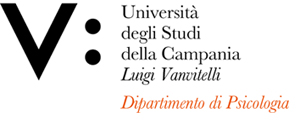Riccardo GALIANI
Insegnamento di PSICODINAMICA DELLE RELAZIONI
Corso di laurea magistrale in PSICOLOGIA CLINICA
SSD: M-PSI/07
CFU: 6,00
ORE PER UNITÀ DIDATTICA: 42,00
Periodo di Erogazione: Primo Semestre
Italiano
| Lingua di insegnamento | ITALIANO |
| Contenuti | Il corso è un modulo dell'insegnamento di Psicodinamica di gruppo e delle relazioni, le votazioni dei due moduli sono distinte, ma per ottenere la votazione per l'insegnamento lo studente dovrà aver superato gli esami di entrambi i moduli. Verranno presentati alcuni argomenti e apporti teorici utili a confrontarsi con il fondamento intersoggettivo (non interpersonale) delle dinamiche psichiche e della clinica psicoanalitica. Il primo aspetto sarà indagato riferendosi a alcune ricostruzioni della così detta “relazione primaria”, il secondo mediante il riferimento al transfert. |
| Testi di riferimento | Testi di riferimento |
| Obiettivi formativi | 1. Conoscenza e capacità di comprensione: Elaborare e/o applicare idee originali, riuscire a misurarsi con la tesi, non verificabile empiricamente, del fondamento intersoggettivo della vita psichica conscia ed inconscia |
| Prerequisiti | 1. Aver letto qualcosa di Shakespeare, preferibilmente Hamlet |
| Metodologie didattiche | Lezioni frontali: discussioni di gruppo |
| Metodi di valutazione | esame orale |
| Programma del corso | Obiettivi del corso |
English
| Teaching language | Italian |
| Contents | The course is a module of group psychodynamics and relationships, the votes of the two modules are distinct, but to get the vote for teaching the student must have passed the exams of both modules. Some topics and theoretical contributions will be presented in order to deal with the intersubjective (not interpersonal) foundation of psychic dynamics and psychoanalytic clinic. The first aspect will be investigated referring to some reconstructions of the so-called "primary relationship", the second through the reference to transference. |
| Textbook and course materials | Testi di riferimento |
| Course objectives | 1. Knowledge and understanding skills: To elaborate and/or apply original ideas, to be able to measure oneself with the thesis, not empirically verifiable, of the intersubjective foundation of the conscious and unconscious psychic life |
| Prerequisites | 1. Having read something by Shakespeare, preferably Hamlet |
| Teaching methods | frontal lessons: group discussions |
| Evaluation methods | oral examination |
| Course Syllabus | Course objectives |








